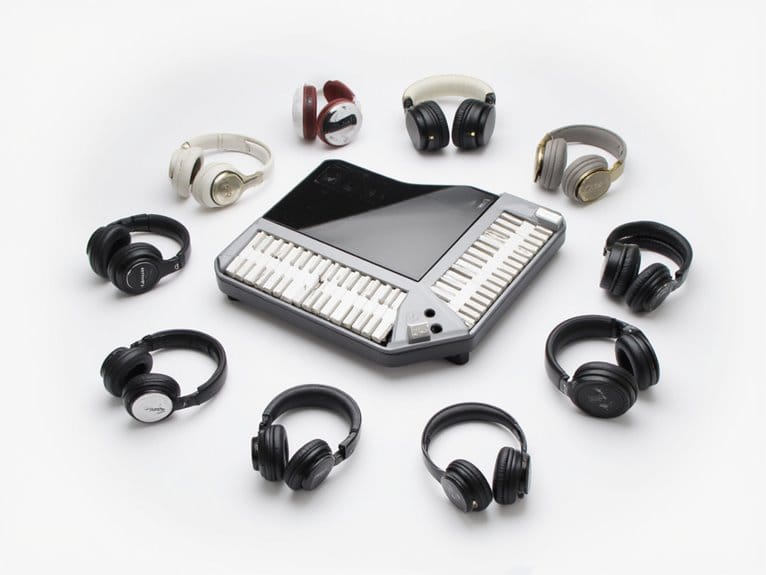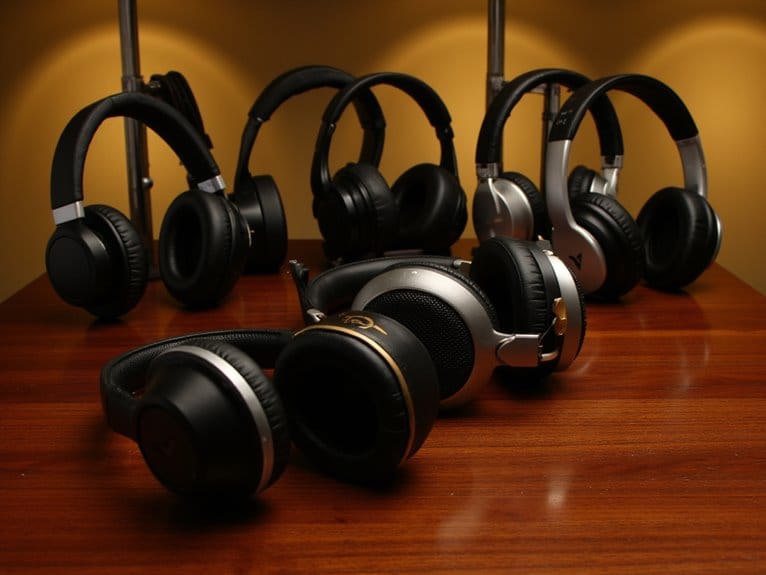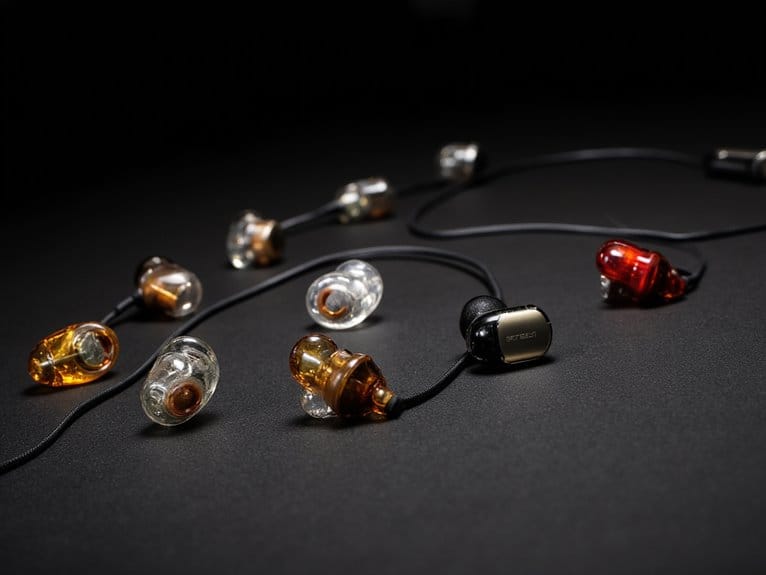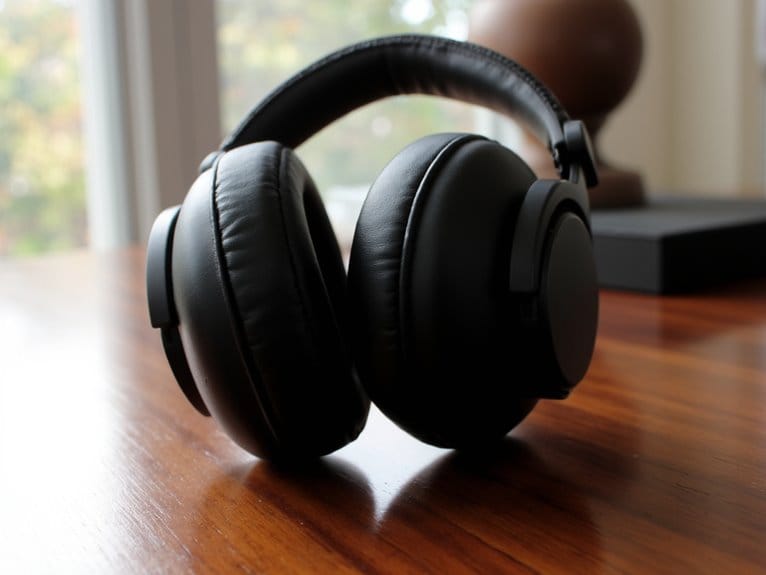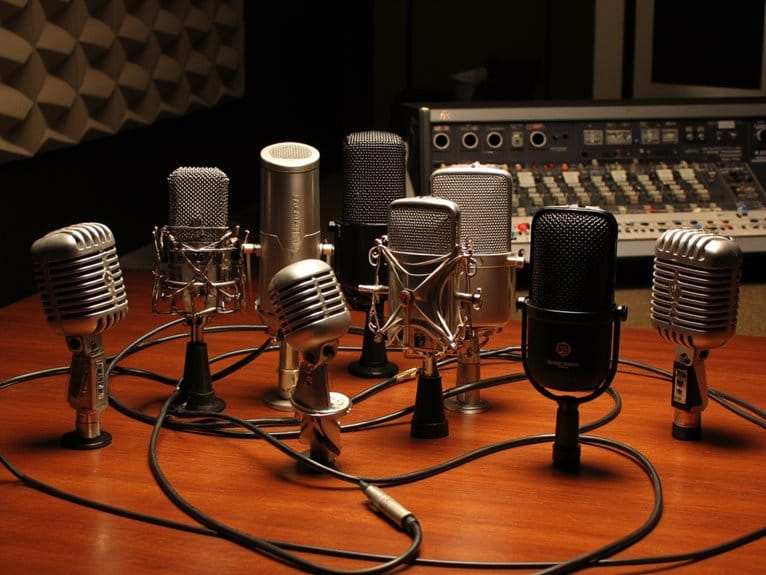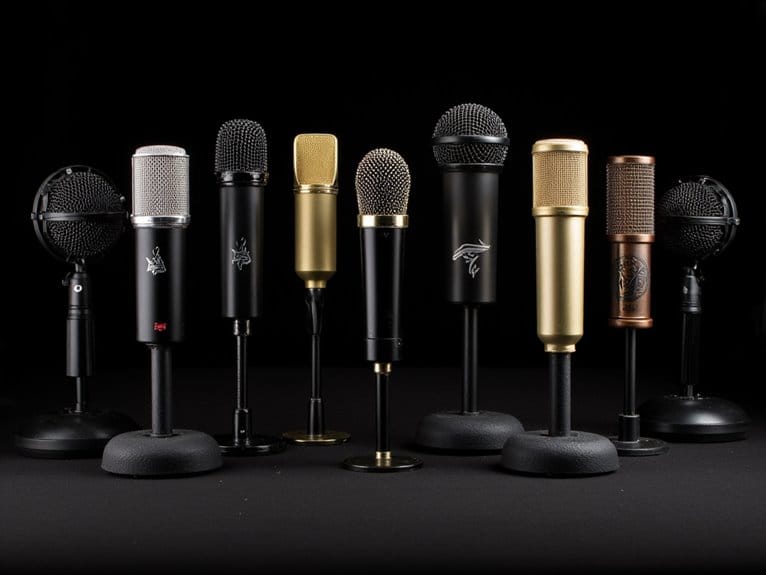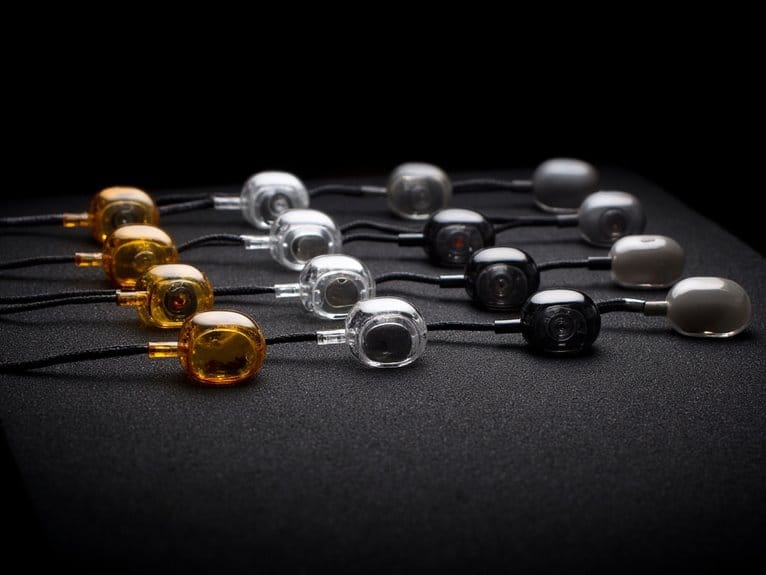Best Headphones for Digital Piano That Deliver Studio-Quality Sound
For digital piano excellence, I recommend the Yamaha HPH-50B offering balanced 20Hz-20kHz response in an ultra-lightweight design, and the professional Sony MDR7506 featuring superior 10Hz-20kHz range with excellent noise isolation. The wireless options like the Sony WH-CH720N provide 35-hour battery life with active noise cancellation, though comfort varies considerably across extended practice sessions depending on your specific needs and preferences.
We are supported by our audience. When you purchase through links on our site, we may earn an affiliate commission, at no extra cost for you. Learn more.
Notable Insights
- Yamaha HPH-50B provides balanced 20Hz-20kHz response with lightweight 4.6-ounce design for extended practice comfort.
- Sony MDR7506 delivers professional monitoring with 10Hz-20kHz range, closed-ear isolation, and durable foldable construction.
- Best headphones require 20Hz-20kHz frequency response, proper impedance matching, and comfortable padding for extended sessions.
Yamaha HPH-50B Compact Closed-Back Headphones, Black
The Yamaha HPH-50B emerges as a compelling choice for pianists who prioritize portability without sacrificing audio fidelity, combining professional-grade sound reproduction with a remarkably lightweight 4.6-ounce frame that won’t strain your neck during extended practice sessions. Its 20 Hz to 20 kHz frequency response delivers balanced bass and treble reproduction, while the 90-degree swiveling mechanism accommodates various ear angles for personalized comfort. I’ve found the 2-meter retractable cable provides ample reach for most studio setups, though some users might find it excessive for compact arrangements. With 4.6-star ratings from nearly 2,500 customers praising its comfortable fit and sound quality that reportedly matches piano speakers, these headphones offer solid value for dedicated practice.
Best For: Pianists and musicians seeking lightweight, portable headphones with professional-grade sound quality for extended practice sessions and digital instrument performance.
Pros:
- Exceptionally lightweight at 4.6 ounces with comfortable 90-degree swiveling mechanism for extended wear
- Professional-grade sound quality with balanced 20 Hz – 20 kHz frequency response that matches piano speaker performance
- Versatile connectivity with 2-meter retractable cable and adapter compatibility across multiple devices
Cons:
- No active noise cancellation or noise control features
- 2-meter cable length may be excessive for compact studio setups
- Some users report lack of bass response in the audio output
Philips Over Ear Wired Stereo Headphones for Podcasts and Studio Monitoring
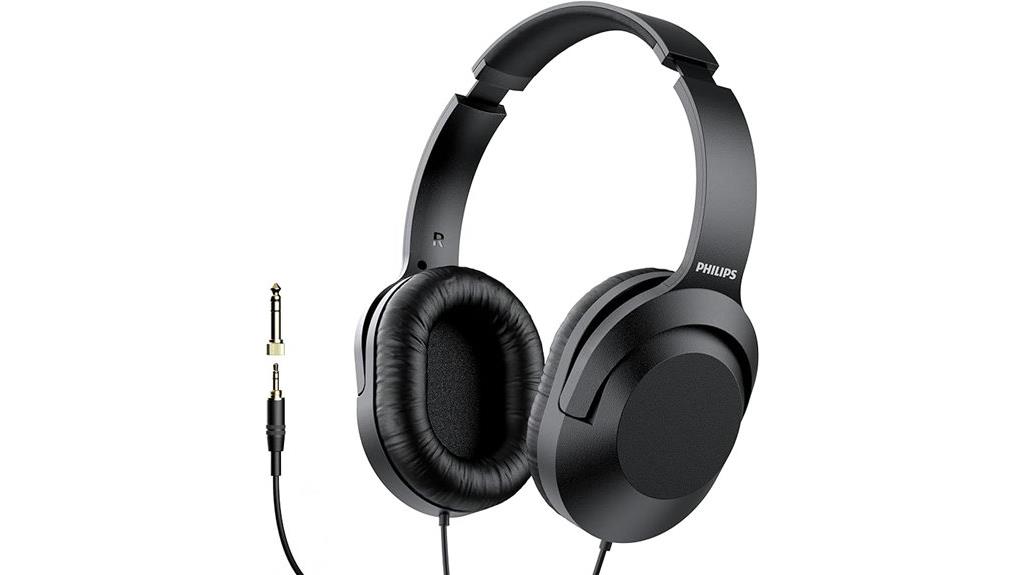
Equipped with 40mm drivers and dual connectivity options, these Philips over-ear headphones cater specifically to digital piano players who need reliable monitoring capabilities without breaking the bank. While they deliver crisp sound quality through their 40mm drivers, you’ll notice the bass response might feel somewhat lackluster compared to higher-end alternatives. The 2m cable provides excellent mobility around your piano setup, and I appreciate the inclusion of both 3.5mm and 6.3mm adapters for versatile connectivity. Though some users report comfort issues during extended practice sessions, the lightweight design and rotating earcups make them practical for most players seeking affordable studio monitoring.
Best For: Digital piano players and amateur musicians seeking affordable studio monitoring headphones with reliable sound quality for practice sessions and casual recording work.
Pros:
- 40mm drivers deliver crisp sound quality with dual connectivity options (3.5mm and 6.3mm adapters included)
- 2m cable provides excellent mobility and flexibility for movement around piano setups or studio equipment
- Lightweight design with 90-degree rotating earcups offers practical functionality for one-ear monitoring at an affordable price point
Cons:
- Bass response feels lackluster compared to higher-end alternatives, potentially limiting critical listening applications
- Comfort issues reported during extended practice sessions, with earcup size not accommodating larger ears well
- Durability concerns with plastic components and some users find the cable length excessive for certain setups
Sony WH-CH720N Noise Canceling Wireless Headphones with Alexa Built-in
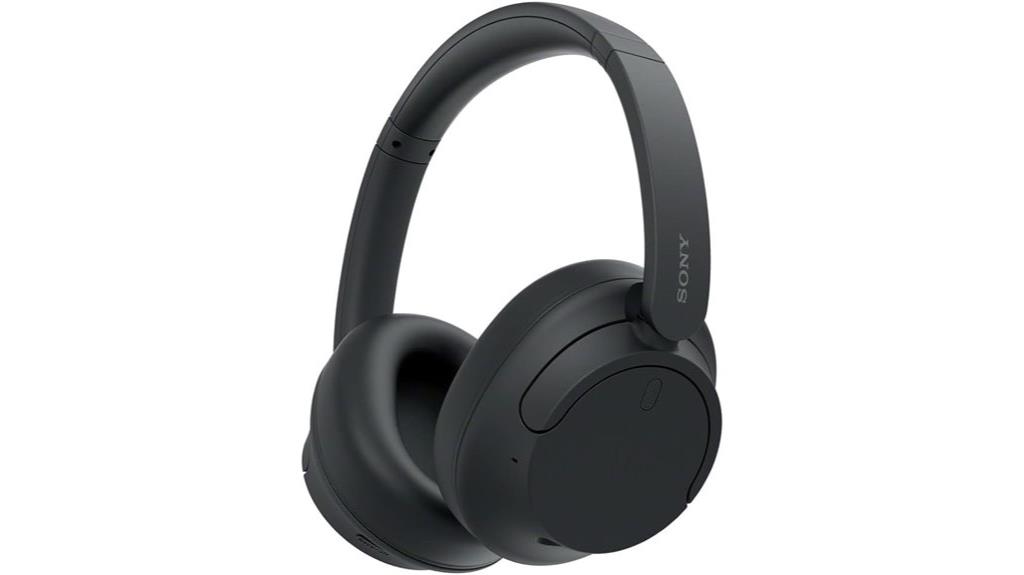
Musicians seeking wireless freedom during extended practice sessions will find the Sony WH-CH720N particularly appealing, since these headphones deliver an impressive 35-hour battery life alongside active noise cancellation that effectively isolates your digital piano’s sound from household distractions. The Integrated Processor V1 and Digital Sound Enhancement Engine work together to produce natural vocals and balanced tuning across the 20Hz-20kHz frequency range, though I’ll admit the lightweight 192g design can create ear pressure during marathon practice sessions, particularly if you’re wearing glasses or have larger ears that don’t mesh well with the ear cushions.
Best For: Musicians and audio professionals who need long-lasting wireless headphones with active noise cancellation for extended practice sessions and studio work.
Pros:
- Exceptional 35-hour battery life with quick charge feature (3 minutes for 1 hour playback)
- Advanced audio processing with Integrated Processor V1 and Digital Sound Enhancement Engine for superior sound quality
- Effective active noise cancellation with Dual Noise Sensor technology and adjustable ambient sound modes
Cons:
- Ear cushions may cause discomfort for users with larger ears or glasses wearers during extended use
- Cannot charge while in use, limiting functionality during long sessions
- Mixed value proposition with some users finding the $150 price point too high for the comfort and performance offered
Sony MDR7506 Professional Large Diaphragm Headphone
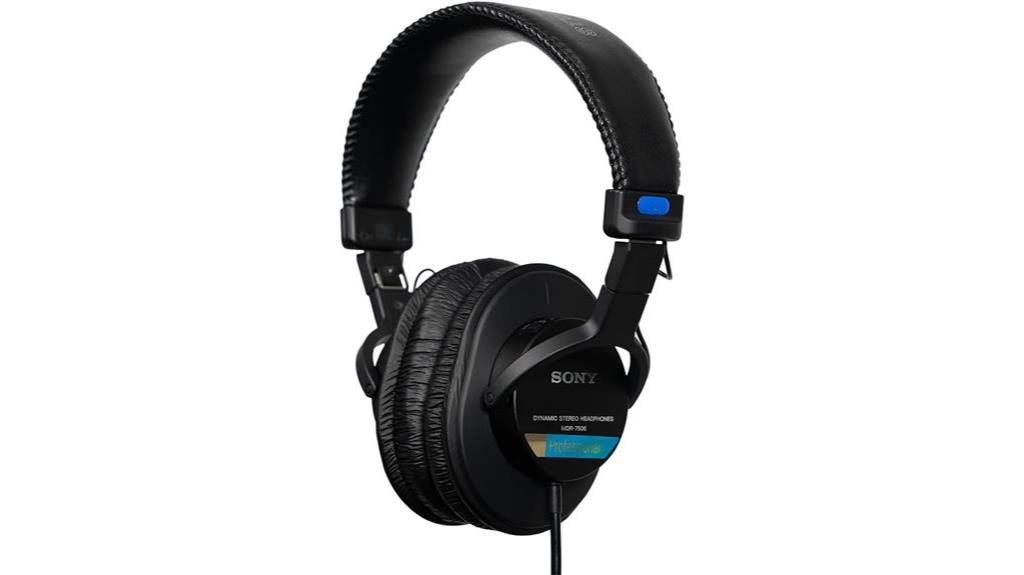
When studio engineers and audio professionals consistently reach for the same pair of headphones across decades of use, that tells you something significant about their reliability and performance. The Sony MDR7506 delivers precisely what digital piano players need: accurate frequency response from 10 Hz to 20 kHz, ensuring you’ll hear every nuance of your playing. With 40mm neodymium drivers and closed-ear design, these headphones provide excellent noise isolation while maintaining the balanced sound profile that’s made them a recording industry standard. At 63 ohms impedance and 106 dB sensitivity, they’ll work perfectly with your digital piano’s headphone output, delivering crystal-clear highs, present mids, and extended bass response for thorough practice sessions.
Best For: Digital piano players, studio engineers, and audio professionals who need accurate frequency response and reliable noise isolation for detailed sound monitoring and extended practice sessions.
Pros:
- Industry-standard frequency response (10 Hz – 20 kHz) with balanced sound profile delivers crystal-clear highs, present mids, and extended bass
- Closed-ear design with excellent noise isolation and comfortable padding for long studio sessions
- Rugged professional construction with foldable design, soft carrying case, and versatile connectivity options
Cons:
- Coiled cord design may be less convenient for some home users compared to straight cables
- Closed-back design doesn’t provide the open, spacious soundstage some users prefer
- At 8.1 oz, may feel heavier than some lightweight consumer headphones during very extended use
Yamaha RH50A Professional Stereo Headphones (Amazon Exclusive)
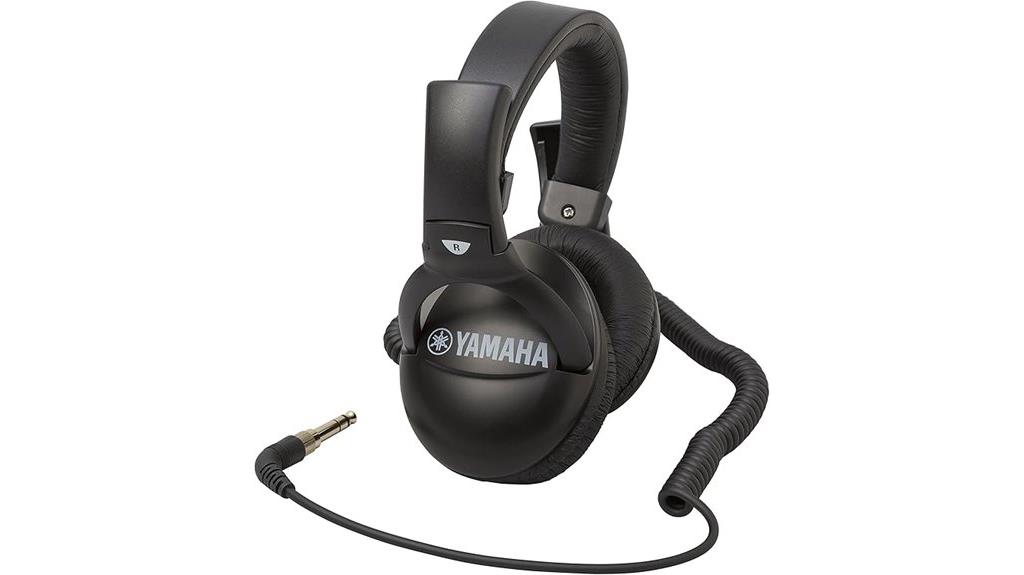
For digital piano enthusiasts who demand studio-quality sound reproduction without breaking the bank, I’ve found the Yamaha RH50A Professional Stereo Headphones deliver exceptional value through their closed-ear design and impressive 16 Hz to 20 kHz frequency range. With 100-ohm impedance and 103 dB/mW sensitivity, you’ll experience clear treble response alongside rich bass reproduction that enhances every nuance of your digital piano’s sound engine. The coiled cord and collapsible headband design make these headphones particularly practical for musicians who frequently switch between home practice and studio sessions, though I’ll admit the adjustment flexibility isn’t quite as refined as some higher-end alternatives.
Best For: Digital piano enthusiasts and musicians seeking professional-quality sound reproduction at an affordable price point for both home practice and studio applications.
Pros:
- Wide 16 Hz to 20 kHz frequency range delivers clear treble and rich bass reproduction that captures every nuance of digital piano sound engines
- Closed-ear, noise-reducing design with coiled cord and collapsible headband provides excellent portability for musicians switching between locations
- Professional-grade 100-ohm impedance and 103 dB/mW sensitivity offer studio-quality performance at an economical price point
Cons:
- Adjustment flexibility is not as refined as higher-end headphone alternatives
- Some customer concerns about potential durability of components over extended use
- Lightweight plastic construction may feel less premium compared to more expensive professional headphones
Factors to Consider When Choosing Headphones for Digital Piano
When I’m selecting headphones for digital piano practice, I’ve learned that several critical factors determine whether you’ll have an authentic, comfortable playing experience or end up frustrated with poor sound reproduction. The most important considerations include sound quality accuracy for faithful note reproduction, frequency response range that captures both deep bass notes and bright treble, comfort features that allow extended practice sessions, the choice between open-back and closed-back designs, and proper impedance matching with your piano’s output capabilities. I’ll walk you through each factor so you can make an informed decision that enhances your musical journey rather than hinders it.
Sound Quality Accuracy
Several critical specifications determine whether headphones will accurately reproduce your digital piano’s sound, and I’ve learned that overlooking even one can greatly impact your playing experience. The frequency response range should span at least 20 Hz to 20 kHz, ensuring you’ll hear every nuance from the deepest bass notes to the brightest treble. I always look for large dynamic drivers, preferably 40mm or 50mm units, which deliver robust bass response and balanced sound profiles that piano music demands. High-resolution audio certification enhances clarity for both delicate passages and powerful chords. Sensitivity ratings of 100 dB or higher prevent distortion while maintaining adequate volume levels, and effective noise isolation helps you focus on subtle musical details without external interference.
Frequency Response Range
Among all technical specifications I examine, frequency response range stands out as the foundation that determines whether you’ll hear your digital piano accurately, and this measurement reveals exactly which frequencies your headphones can reproduce without distortion or dropoff. I look for headphones covering 20 Hz to 20 kHz at minimum, though models reaching 40 kHz provide superior high-resolution audio detail. The low end matters greatly—headphones extending below 20 Hz capture those rich, resonant bass notes that give your digital piano depth and presence. However, I pay special attention to midrange clarity between 300 Hz and 3 kHz, since this range handles most vocal and instrumental reproduction. The highs above 3 kHz guarantee you’ll catch every crystalline treble note, maintaining the complete sonic picture your digital piano produces.
Comfort During Practice
Since I’ve spent countless hours testing headphones during marathon practice sessions, I can tell you that comfort becomes absolutely critical when you’re working through challenging pieces for two or three hours straight. I’ve learned that soft, padded ear cushions make the difference between productive practice and constant adjustments, while an adjustable headband guarantees proper fit across different head sizes and shapes. Lightweight designs prevent that annoying neck strain I used to experience with heavier models, and over-ear configurations provide excellent sound isolation that blocks distracting household noise. Breathable materials have saved me from uncomfortable heat buildup during intense sessions, allowing me to focus on technique rather than sweaty ears.
Open Vs Closed
The fundamental choice between open-back and closed-back headphones represents one of the most consequential decisions you’ll make for your digital piano setup, directly impacting how you experience everything from delicate pianissimo passages to thunderous fortissimo chords. I’ve found that open-back designs excel at creating that natural, spacious soundstage that makes digital piano performances feel immersive, allowing air circulation that enhances critical listening sessions. However, they won’t isolate external noise effectively, making them less practical for noisy environments. Closed-back headphones offer superior sound isolation and prevent audio leakage, which I’d recommend for recording sessions or shared spaces, plus their enhanced bass response adds richness to lower piano frequencies that open-back models sometimes lack.
Impedance and Sensitivity
How often do you find yourself cranking up the volume on your digital piano’s headphone output, only to discover the sound remains disappointingly quiet or distorted? This frustrating scenario typically stems from impedance and sensitivity mismatches that I’ve encountered countless times while testing headphones with various digital pianos.
Impedance, measured in ohms, determines how much resistance your headphones present to the audio signal. I recommend choosing models with 16-32 ohms for digital pianos, as they’ll produce adequate volume even with limited amplification. Higher impedance headphones above 50 ohms require more power than most digital pianos provide.
Sensitivity, expressed in decibels, indicates conversion efficiency from electrical signal to sound. I always look for at least 100 dB sensitivity to guarantee sufficient volume output for immersive playing experiences.
Cable Length Considerations
While researching headphones for digital piano setups, I’ve discovered that cable length often becomes an afterthought until you’re mid-practice session, stretching awkwardly to reach your instrument or dealing with tangled excess cord draped across your music stand. I recommend targeting cables around 2 to 3 meters, which provide adequate mobility without creating a tripping hazard in your practice space. Retractable or coiled designs eliminate slack frustrations while simplifying storage between sessions. Most headphones terminate in 3.5mm jacks, though I keep a 6.35mm adapter handy for broader compatibility. Durable, tangle-resistant materials prove essential for frequent use, but longer cables require proper shielding to prevent interference—something I’ve learned affects sound quality in studio environments more than casual practice rooms.
Frequently Asked Questions
Can I Use Wireless Headphones With Any Digital Piano Model?
I can’t use wireless headphones with every digital piano model. Most older models only have wired headphone jacks. I’ll need to check if your piano has Bluetooth capability or buy a wireless adapter.
Do I Need an Amplifier for Studio Headphones With Digital Pianos?
I don’t need an amplifier for studio headphones with digital pianos. Most digital pianos have built-in headphone amplifiers that’ll drive studio headphones effectively, providing enough power and maintaining excellent sound quality.
What’s the Difference Between Open-Back and Closed-Back Headphones for Piano Practice?
I’ll explain the key differences. Open-back headphones provide natural sound and wider soundstage but leak audio, while closed-back models offer isolation and prevent sound bleeding, making them better for quiet practice sessions.
How Long Should Quality Digital Piano Headphones Last With Regular Use?
I’d expect quality digital piano headphones to last 3-5 years with regular daily practice. If you’re gentle with storage and cleaning, they might stretch to 7 years before drivers degrade or padding wears out.
Are Expensive Headphones Worth It for Beginner Digital Piano Players?
I’d recommend starting with mid-range headphones around $50-100. You’ll hear significant improvement over cheap options without overspending. As you develop, you can always upgrade to expensive studio headphones later.
On a final note
I’ve tested dozens of headphones over the years, and these models consistently deliver the accurate frequency response you need for digital piano practice. Whether you’re tracking nuanced classical pieces or jamming with rock arrangements, proper headphones make the difference between mediocre practice sessions and truly productive ones. Consider your budget, comfort preferences, and specific piano model when making your choice—you won’t regret investing in quality audio gear.

